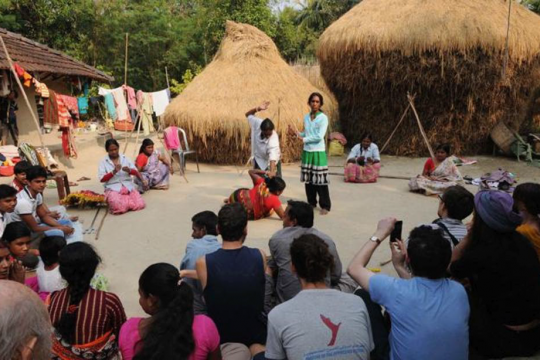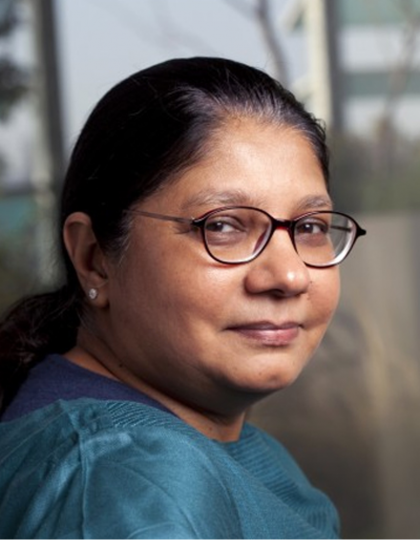Fieldwork is the most interesting part of being a researcher if you ask Jyotsna Jalan, Professor of Economics in Calcutta. “You learn so much from meeting the people you study, that the data will not tell you,” she says. She has, among others, learned a lot from meeting villagers in West Bengal, India.
Don’t miss her keynote presentation at EfD’s Annual Meeting when she talks about how we can change societies and behaviors in unconventional ways!
Jyotsna Jalan is passionate about issues related to poverty, education, gender, and health.
One of Jyotsna Jalan’s studies that gained a lot of impact was an assessment of 240 primary schools covering more than 4,000 students and the quality of their education. The study was picked up by several media and showed that the quality was very bad.
“We presented the study to policymakers and as a consequence, there were indeed some changes made. The assessments have also become more rigorous after that,” says Jyotsna Jalan who is determined to not do research for its own sake, but to bring change to society.
Analyze oppression to find other ways
She will, however, talk about her more recent research at EfD’s Annual Meeting, which is about participatory theater as a way to change communities and behaviors. Domestic violence is very common, costly, and sadly widely accepted in many countries. Participatory theater is a rather new cultural intervention that has become common in some countries in the Global South.
In the first part of participatory theater, the actors play a scene, for instance: A husband who has lost his job gets angry and frustrated, comes home, and abuses his wife. In the second part, they ask spectators to participate. How do the spectators act and react? It encourages the participants to analyze oppression and find other ways to behave.
Abuse was reduced by a quarter
Jyotsna Jalan and two co-authors have done a large-scale study on the impact of participatory theater together with one of the world's largest participatory theater organizations: Jana Sanskriti in West Bengal, India. 3,000 married couples were interviewed (husband and wife separately) in villages exposed to participatory theater (treatment villages) and in villages where Jana Sankriti did not perform any plays (control villages) but were similar to the treatment villages in terms of access to public services and demographics. They found that the physical abuse was reduced by a quarter and the number of men who found wife beating legitimate was reduced by half.
“These are very interesting results since neither legislation nor information campaigns have had any significant impact on domestic violence in India. And this method could of course be used on other societal problems as well,” says Jyotsna Jalan.
Could be used in other contexts
The region of West Bengal, which has a high level of education in the country, has still according to Jyotsna Jalan, the highest rate of child marriages. According to the latest round of the National Family Health Survey of India, 55% of the women are married before the age of 18 and some are as young as 12-13 years old.
“Why not use this method on issues such as child marriages or how women and children suffer more from the effects of climate change?”
Besides the data they gathered, she learned a lot from talking to the people who participated in the survey.
“Sometimes it was like opening floodgates when people start to confide in you.”
Coming from a wealthy business family, it was the discussions with the domestic help that opened her eyes to the fact that there was a world outside the one she was living in. Pursuing an academic career turned out to be a way to contribute to change in society for disadvantaged groups.
By: Petra Hansson
About Jyotsna Jalan
She got her Ph.D. at the University of California in San Diego in 1995 and worked at the World Bank in Washington DC between 1992 and 1998. Then she moved back to India and worked in New Delhi at the Indian Statistical Institute. Since 2003, she is a Professor at the Center for Studies in Social Sciences, Calcutta (CSSSC, India), and the Project Director of the Centre for Training and Research in Public Finance and Policy (CTRPFP).


